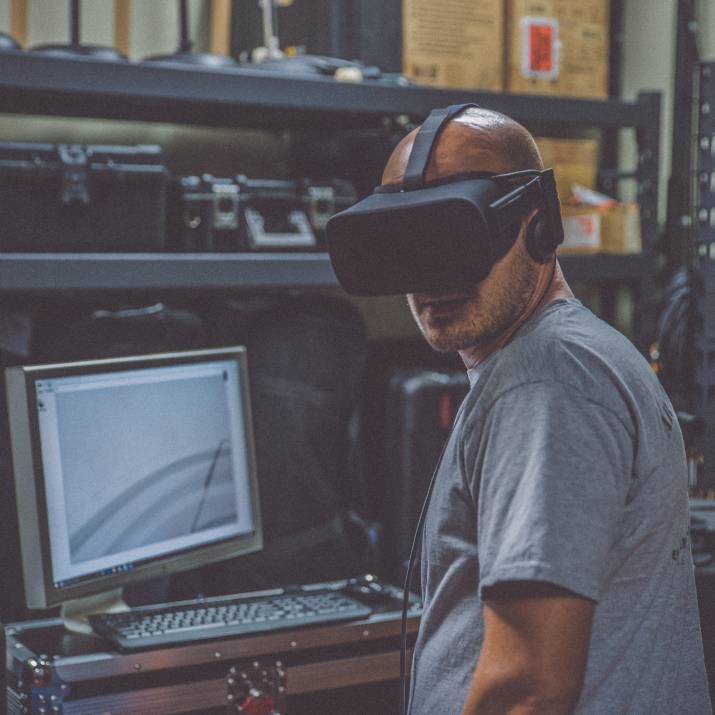Every business is vulnerable to digital disruption. But before a seemingly out of nowhere StartUp with a digitalized version of your traditional company forces you on the knees, we show you today a step-by-step guide to put your business model to the test of the future. The task: Destroy Your Business - before someone else does...

If the (US-American) startup march has shown one thing, then it is that every company, no matter how established it may be - or even every industry, no matter how established it may be - is available for disposition in case of doubt. A few examples:
- Amazon and the stationary book trade
- WhatsApp and SMS
- Twitter and dpa
- Netflix and the film distributor
- AirBnB and hotels
- Tesla and the automotive industry
- Kickstarters and the credit system
- Uber and Taxis
- Spotify and the music industry
- SpaceX and NASA
...and so on. The list could go on forever.
Especially for german, old-established managers sitting in wood-panelled meeting rooms, all this should seem threatening. But it's worse if it doesn't. In this post we encourage you to destroy your own business model. At least mentally. But also physically. Just as Klöckner & Co, for example, is trying to do in the steel industry. This is the only way to transform tomorrow's competition, weakness and disruptive innovations into strength and continuous growth.
But what can we do?
In this article we would like to show how you can start a small self-experiment. Whether in a workshop with your colleagues or alone. Of course, there are many trails leading to Rome but we will give you a first hiking plan.
We do the whole thing with an example: Let's take something nice and physical: a large carpentry company specialising in fitted kitchens. This is a particularly tangible example, especially in Germany, which is characterised by craftsmanship, because classic carpentry will always exist and we will always need it, right? No reason to worry. IKEA only has mass-produced products. And even the designer kitchen cupboard does not per se fit into the sloping attic. Handiwork remains handiwork. Good, German quality goods.
Step 1: Describe the business process
The first step is to clarify what the company actually does at its core. Most of the time, the added value is not just in the product. The rough process of our carpenter could look like this:
First, after marketing or perhaps word-of-mouth propaganda, there is customer demand. This is followed by the discussion with the customer and the recording of the requirements. Now perhaps the first design and the rough cost estimate. Negotiation and even more designs. Perhaps even a few on-site discussions, because the customer may want to see and touch the material. The premises must also be measured precisely. If everything goes well, finally the customer's promise - the first down payment and it's off to production. Measure, model, procure material, saw, cut, grind, polish. A lot of dust and even more heart blood and sweat. Now off to the customer, it follows the installation, the invoicing and ready! Later perhaps repairs or just the follow-up order. In between, of course, all kinds of financial accounting, IT, perhaps also scheduling and logistics.
What a little drawing can do for you
This process is intended as a demonstration and is therefore intentionally general. It is advisable to record your own business process in more detail. Sometimes this alone is not easy. A workshop with the right colleagues can help. We are lucky enough to lead and accompany these kinds of workshops from time to time. It is amazing how different employees in the same team perceive the core process of the company. Usually this is a good indicator that there is potential for improvement in these areas.
Step two: Identify value-adding components
Once the process has been put on paper or on the blackboard, it is possible to mark which elements in the process contribute to added value. In our carpentry shop, these could be some of the components:
- good customer service
- the best range of goods
- technical advice
- the implementation
- clean and tidy installation
- and so on
At this point one can also identify what the biggest value creation killers are and thus uncover improvement potential again. A pure improvement, however, is usually only conservative. Here we want to break something. So let's move on to the next step.
Step three: Identify disruptive innovations
Now comes the certainly most difficult part: Which innovation, which process, which brilliant idea takes away the added value and/or the costs from the individual components of the process? Those disruptions are hard to identify - or to accept.
One approach is to keep the big and already known disruptors against the process. For example the following:
- Platforms / Cloud
- Machine Learning / Artificial Intelligence
- Virtual reality
- Augmented Reality
- 3D printing
- Internet of Things
- Advanced Materials (e.g. Memory Metals)
- Advanced Genomics
- Autonomous and Near-Autonomous Machines
- Advanced Robotics
This list is not complete and of course in random order. Moreover, it is per se constantly changing and varies from industry to industry. Much more important: Disruption is not path-dependent and usually not known. Disruption and disruptive technologies come by definition from nowhere and without warning. Nevertheless, the list is a good starting point for developing ideas.
In our example, a cloud solution in combination with Augmented Reality could help the customer to design his kitchen himself and at home - ready measured, including material and cost estimate. Perhaps on a platform where customers can get offers from joineries and possibly even auction individual kitchen components. Small components that are produced manually may soon be coming from the home 3D printer, and autonomous delivery services will leave small households satisfied with simple kitchens.
Step Four: Trigger Change
In the best case, an idea was found that is not yet in development or is already on the market without being noticed. In any case, it is now a matter of initiating change. Immediately. We are happy to help.
Successful strategy projects without Excel
Falcon project management software helps you to implement your projects. Get a simple overview of the overall project, objectives and progress and create clear responsibilities. This saves you a lot of time in organization and planning. Your colleagues can finally concentrate on their tasks and find the information they need in one place.
Find out in a short conversation whether Falcon is interesting for your projects.

